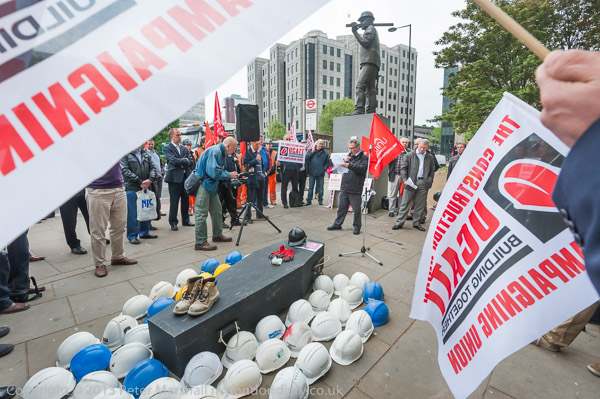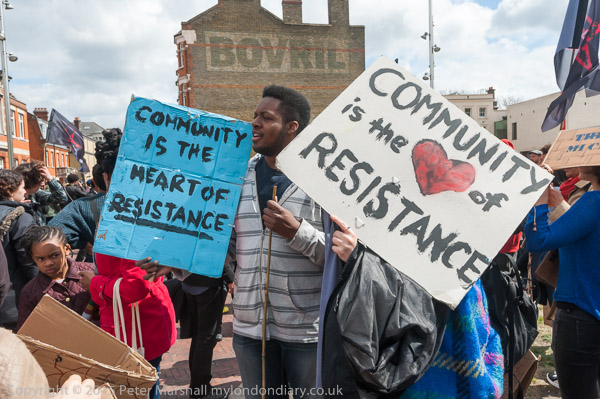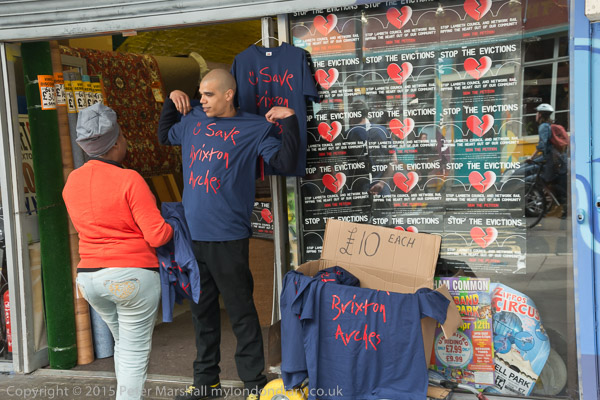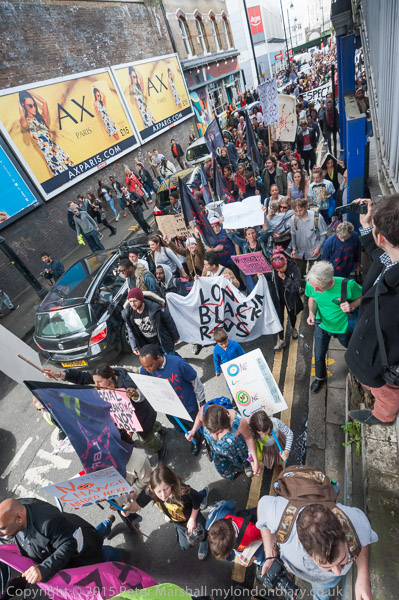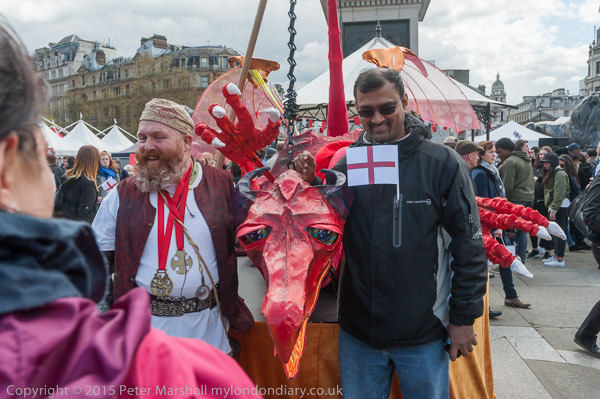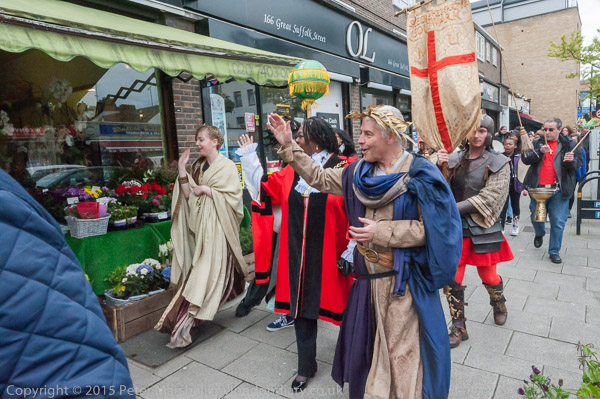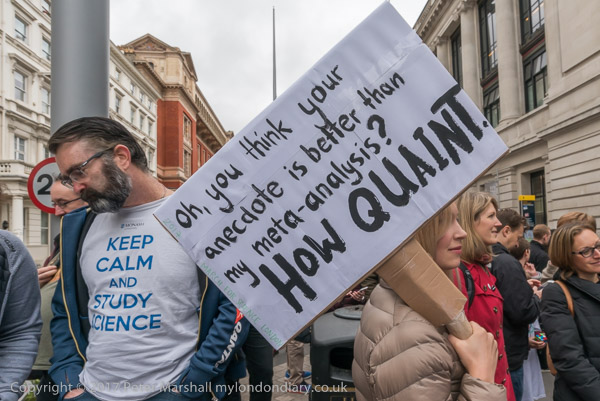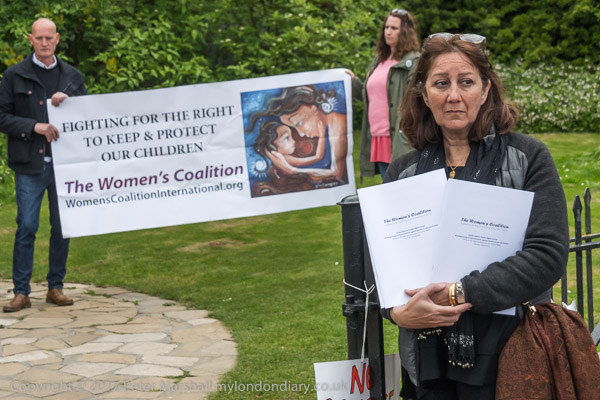Hats, Bags, Passports, Mansions, Biocrin & Hollywood: This post continues my 1988 walk South Stokey & Hornsey Detached posted a few days ago.
Back Road Kingsland dated from 1839 and was renamed Boleyn Rd in 1877, one of a number of local streets given names associated with Henry VIII who was alleged to have used a hunting lodge on nearby Newington Green. Until 1877 the road like many others in London was divided into a number of blocks or terraces each given its own name by the developers and many streets were renamed around then to end this confusion.
I’m not sure when Marmel & Grossmith set up their hat factory here, but in 1940 they had a hat factory at 159 Commercial St, Whitechapel. I don’t know when hat production ended in Boleyn Road, though the fly-posting suggests the works was no longer in use. The 33 flat Dalston Hat apartments into which the factory was transformed bear little resemblance to it but have an entrance marked by a giant top hat.
Alpha House was on Tyssen St which runs north from Dalston Lane, just to the south of where it bends 90 degrees to the east until 2014, although around 2010 the signs for Cambay Bags Luggage & Travel Goods were replaced by those for Cyclone Design Lab. The new flats have solicitors offices on the ground floor.
I was attracted by the confusion of notices and also by the pictures of a large bag, and on the van, a man perhaps cleaning a car.
Back on Dalston Lane there was a photographer’s shop window, something I always stop and have a look in. . The most interesting part to me was a framed selection of 16 passport pictures (with a label stating PASSPORTS in case we were not sure), which I thought gave a good representation of the local community.
Walking towards Hackney I went past Navarino Mansions built in 1885 by the Four Percent Industrial Dwellings Society as 300 flats for Jewish workers from the East End. The architect, Nathan S.Joseph, set new standards for social housing in creating a building that was in finest style of the era as well as providing for the time high standards of provision.
Still owned in 1986-92 by the same organisation, then called simply the Industrial Dwellings Society [IDS] they were treated to a major refurbishment in 1986 to bring them up to modern standards, including the provision of lifts and new gardens in the courtyards and providing more spacious family accommodation.
I think I continued my walk back towards Dalston, probably going along Ridley Road – I liked going to the market there, though seldom took photographs – and turning up St Mark’s Rise with the intention of photographing St Mark’s Church which is a prominent local landmark – sometimes called the ‘Cathedral of the East End’, it is one of the largest parish churches in London and used once to have over 2,000 attending its Sunday services.
The church is Grade II* listed, with a nave by Chester Cheston Junior built in 1864-6 and its distinctive tower by Edward Lushington Blackburne added in 1877-80. The area around was developed in the 1860s as housing for the wealthier middle class who worked in the City.
Vine’s Biocrin Ltd, 111, Clarence Rd, Lower Clapton, Hackney, 1988 88-10b-52
You can still buy a range of Vine’s Biocrin hand sanitiser, oils and creams although I think the original company, incorporated in 1937 for the “Manufacture of soap and detergents – Manufacture and wholesale of toilet preparations ” was dissolved around 2000.
The products, apparently still largely made for hairdressers, are now made elsewhere as this small factory has been replaced by flats, although the building part shown at the left is still there, now Capital Die-Stamping and The Hill Church at “Holy Anointing Christian Centre Where All Yoke Are Broken By The Anointing.” I don’t know if Vine’s make an anointing oil.
I think this is De Vere Court at 63 Kenninghall Road, but if so the details on the impressive porch have been lost presumably in the conversion to 14 flats. Their are other impressive porches on the street but the brickwork around the first floor windows is unusual.
The Lea Bridge Tramway Depot at 38-40 Upper Clapton Road was built in the Victorian era for horse-drawn trams, opening in 1873, and remains, its future under much doubt, as one of the few remaining examples of a Victorian horse-drawn tram depot in London.
The existence of the trams, taking people to work in the City and the West End until 1907 drove the development of a thriving suburb in Clapton. Until recently many of the buildings were in use by a range of businesses who were forced to quit after planning permission was given for this locally listed building to be demolished and the site redeveloped in 2011. Statutory listing was refused in 2005, probably because of English Heritage’s snobbish lack of interest in our industrial past. Hollywood Studios was a rehearsal room and recording studio used by groups including Iron Maiden occupied a part of the buildings for a few years from 1983.
My walk around Clapton in 1988 will continue in a later post.





















